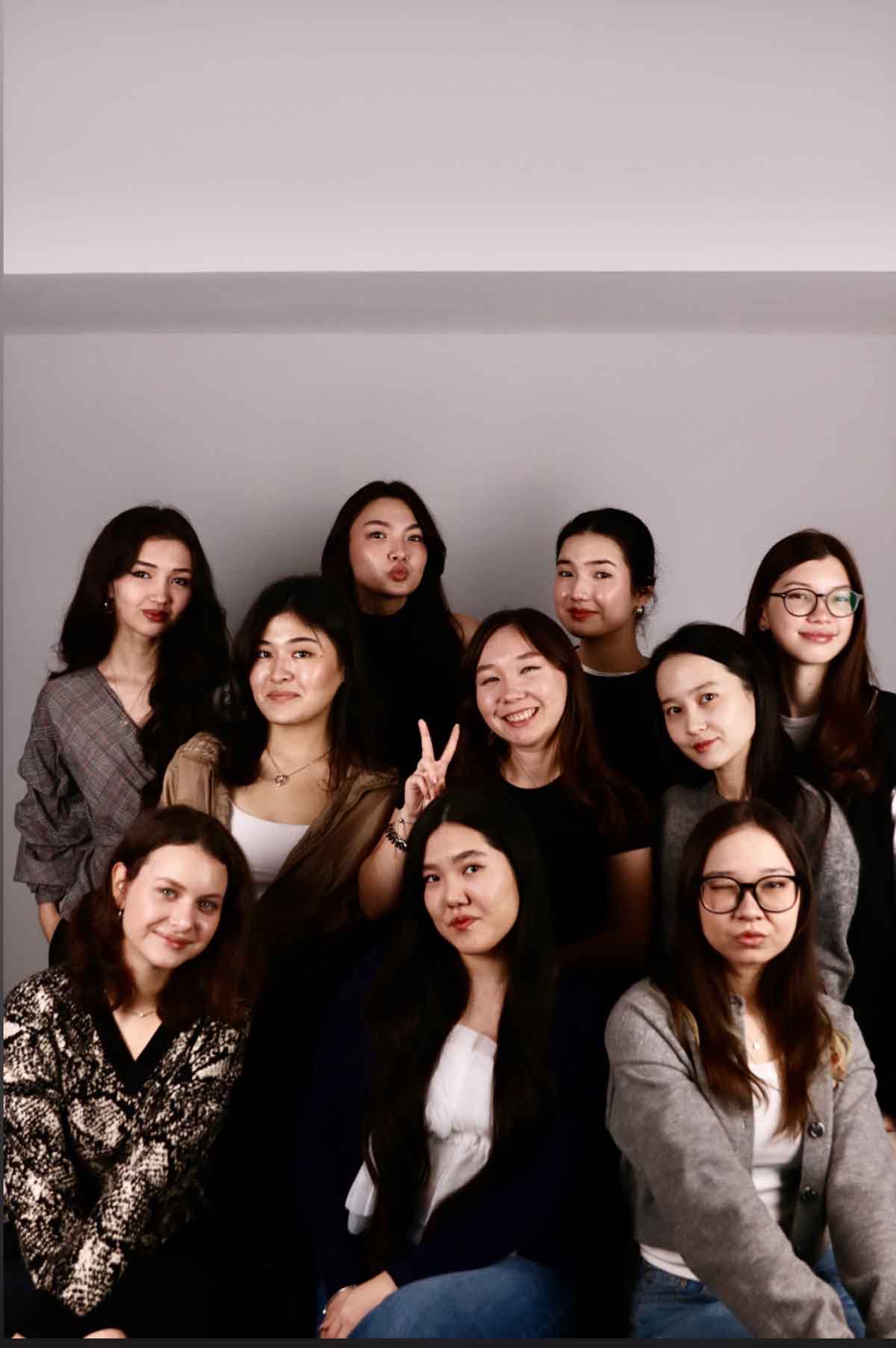Flip the page. There’s a face from years ago. A laugh shared in the canteen. The rush before finals. “Oh yeah, I remember this person.”
That’s the magic of the yearbook — bringing moments back to life, years after they’ve passed.
For graduating students, the yearbook is more than just a collection of photos — it’s a personal time capsule.
For Ilyas Sabirov, who is graduating this year, the yearbook holds a deep personal meaning, he said.
“The yearbook is a reminder of how I started and everything I went through,” he said. “I hope that when we look at it later, it even makes us cry a little.”
Amina Ushurova, also among the graduating class, said she sees it as a way to make meaningful connections.
“It’s a collection of memories, something to preserve the moments and the people I’ve met,” she said.
“All our happiest moments will be there,” said fellow graduate Anaita Amirbek. “One day, we’ll show it to our kids.”

What’s Different This Year?
This year’s yearbook was managed and reimagined by Kamila Arynkazy, who took her role as project manager seriously after learning from the past.
“Last year, there were mistakes with names and photos, so we held a casting this time,” Arynkazy said. All the students who worked on the previous edition had already graduated, and the KIMEP marketing department also recommended holding a casting. The team ended up being all girls, and it was the best kind of coincidence — everyone worked responsibly.”
This edition reflects a major shift in both quality and storytelling, Arynkazy said. It experiments with layout, improved visuals and more personal touches.
“It isn’t just about 2024–2025 — we tried to combine all four years of the graduates’ experience,” said Arynkazy.
“If I had to describe this yearbook in one word, it would be cozy,” said Dilnaz Zhenissova, the content manager. “It’s designed like a personal diary — like when we used to cut out pictures and stick them into journals. That scrapbook-like feel is exactly what makes the 2025 yearbook special.”
To ensure equal effort from all team members, Arynkazy said she tried to bring more structure into the process.
“I organized things in a way that allowed me to see in a Google Sheets how many people each assistant contacted. It was important to me that everyone contributed equally,” she said.
Photoshoot assistant Aigerim Abdykhalyk also shared the behind-the-scenes effort.
“It wasn’t easy balancing work and studying,” said Abdykhalyk. “People don’t always see the full process — how we can sit in front of our laptops late into the night. But I really hope all our hard work pays off.”
Despite the pressure, Abdykhalyk said she found joy in the little moments.
“I really enjoy working with the graduates — helping them put on the graduation gown, sometimes even helping them film Instagram stories,” she said. “It’s fun.”
As for the photo sessions? “It’s funny how the girls always ask to retake their photos, while the boys usually take one photo and leave right away,” Arynkazy said.
“There’s a risk that we might forget someone, so before publishing, we’ll send the mugshot pages to the graduates for review,” she added.
More Than a Click
While some might see a yearbook photo as just a quick snapshot, for Safiyat Zhunussova, the yearbook’s lead photographer, it’s a meaningful job.
One memorable moment for Zhunussova was when a master’s student came in for her photo, accompanied by her young daughter who was playfully making faces. Zhunussova offered to photograph them together.
“I think being a mom and finishing your studies — that’s powerful,” she said.
Zhunussova took more than 300 portraits.
As a university student herself, she said she knows how it feels to look back at a graduation photo and feel disappointed.
“When I look at my own high school photo — I don’t like it,” she said.
“I want to give graduates a photo they’ll look at in 10 years and think, ‘Wow, I looked so good, so young,’” she said. “And maybe they’ll remember me as the one who captured that moment.” .
Data Tells a Story
While some people see the yearbook as just a gallery of faces, there’s a deeper layer that tells the story of the entire graduating class — through numbers. Yearbook designer Yasmin Saulebay worked on the data-driven pages that highlight KIMEP’s diversity and scale.
“One of the most memorable parts of my work was designing the statistics pages — how many students graduated, how many were master’s, and how many were doctoral,” she said. “It took a whole evening, but it was a valuable experience working with the numbers.”
This year’s yearbook includes a thoughtful digital touch. QR codes will be placed between pages, allowing readers to see more photos from key events mentioned in the book.
Yearbook Feedback
The committee’s efforts didn’t go unnoticed.
“We had time to take our photos without rushing. No one pressured us,” said Maryambonu Fazliddinzoda, a graduate.
“Overall, it was easy to get in touch and sign up,” Sabirov said.
“It would’ve been helpful to see past yearbooks — so we’d know how to dress under the gown properly or get ideas for quotes,” Ushurova said.
Countdown to Completion
The yearbook is nearly finished.
“We just need to add the students’ mugshots, and then we’ll submit the design for publishing,” Arynkazy said. “The yearbooks will be distributed at graduation.”
Students are expected to receive their printed yearbooks around the time of the graduation ceremony — a perfect final gift to mark the end of their university journey.
Looking ahead, the team hopes for more resources — perhaps upgraded equipment and better tools to streamline the process.
“It would be wonderful if the university could provide newer, high-quality equipment — that way, we could achieve even better and more efficient results,” the team said.

